Juan M. Hernández-Agramonte (IPA), Carolina Méndez (IDB), Olga Namen (IPA), Emma Näslund-Hadley (IDB), and Luciana Velarde (OSEE, Minedu)
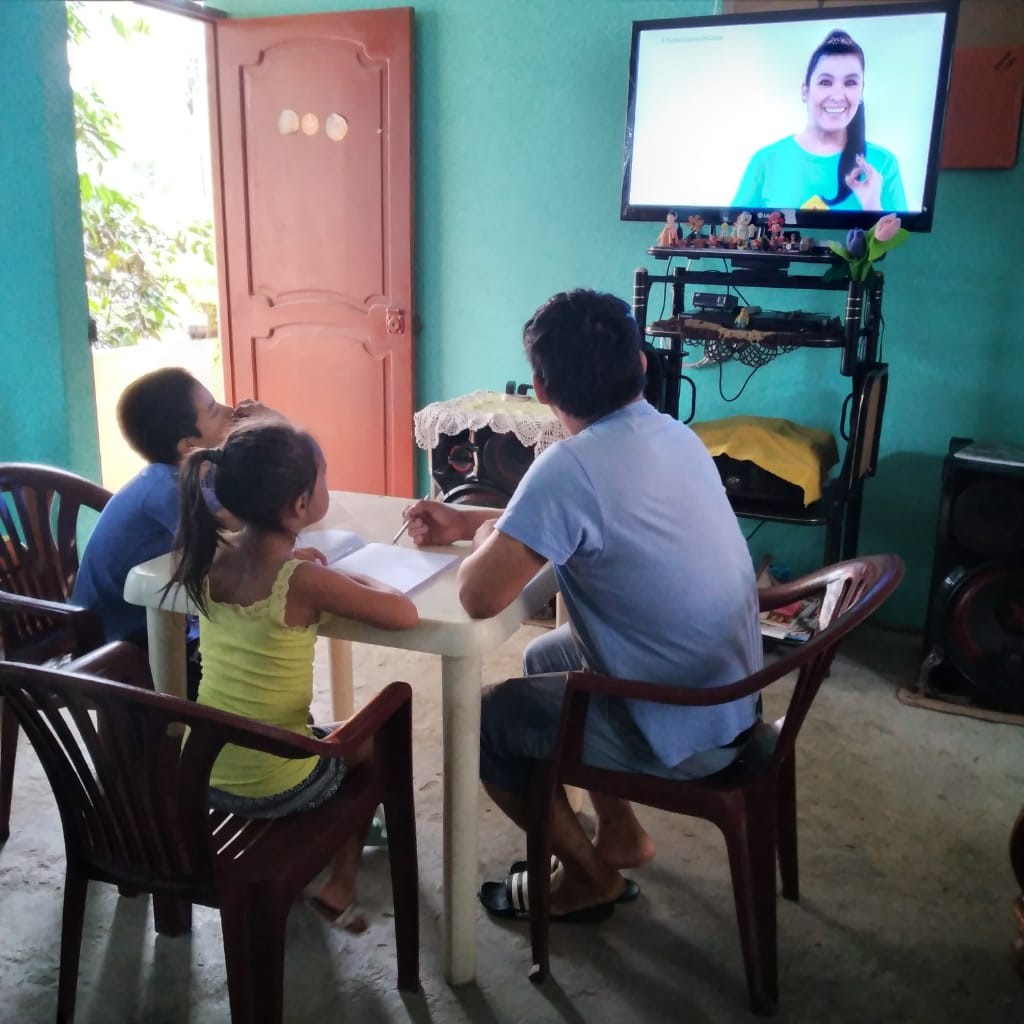 Most schools throughout Latin America have closed due to the COVID-19 pandemic. With the school closures, nearly 8 million Peruvian students, from preschool to high school, have stayed at home. In a few weeks, the Ministry of Education (Minedu) developed the Aprendo en Casa (AeC) strategy. And thus, on April 6th, 3 weeks after the schools closed, 82% of households with children from 3 to 4 years old started their morning accompanied by “Elmo” from Sesame Street, who explained why Elmo should wash his hands. Other programs for the different grades of primary and secondary levels followed. That day 4.3 million people watched educational programming. These television programs are complemented by activities on the AeC web platform and radio programs in 9 native languages.
Most schools throughout Latin America have closed due to the COVID-19 pandemic. With the school closures, nearly 8 million Peruvian students, from preschool to high school, have stayed at home. In a few weeks, the Ministry of Education (Minedu) developed the Aprendo en Casa (AeC) strategy. And thus, on April 6th, 3 weeks after the schools closed, 82% of households with children from 3 to 4 years old started their morning accompanied by “Elmo” from Sesame Street, who explained why Elmo should wash his hands. Other programs for the different grades of primary and secondary levels followed. That day 4.3 million people watched educational programming. These television programs are complemented by activities on the AeC web platform and radio programs in 9 native languages.
Although the strategy has been designed recognizing the diversity of the users, many have asked: How widespread is the actual use of the AeC distance education program? What can we improve?
In this context, Minedu’s Office of Strategic Monitoring and Evaluation (OSEE), with the support of Innovations for Poverty Action (IPA) and the Inter-American Development Bank (IDB), designed a strategy to learn the opinions of directors, teachers and parents were. A first round of telephone surveys included 4,303 principals, 5,328 teachers and 8,319 parents (56% in rural areas and 70% in urban areas). The latter group is representative at the national level, however, due to the lower response rate in rural areas, the results for rural areas should be interpreted with caution.
The survey allows us to enter the ” black box ” of what happens within households with the distance education resources that have been made available during the pandemic. This will allow Minedu to adjust AeC to improve the service. In this first post, out of a series of three, we tell you about some of the opinions that parents have about distance education.
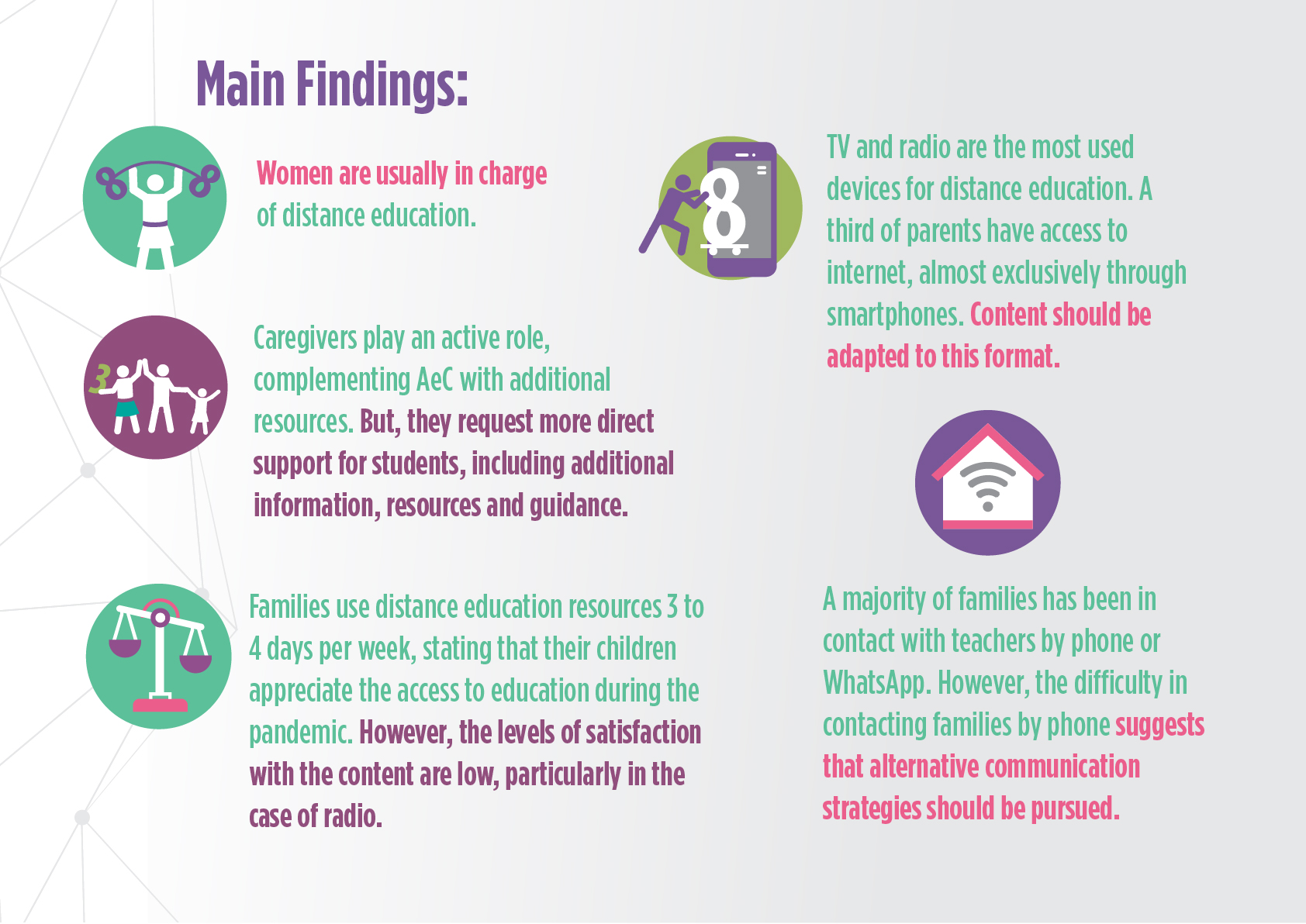
Do families know that Minedu offers distance education resources? 91% of households know of the AeC, mainly through television (65%) and their teachers (46%). Less than 20% of households are aware of the radio program. 75% of the families of bilingual intercultural school students know of AeC and 91% access its content.
Who accompanies the student in distance education? In most cases, mothers support students’ at-home learning (67%).
What devices do families use for distance education? The most common device is television (78%), and to a lesser extent radio (20%) or the internet (22%). 81% of households access AeC only through one device (television, radio or internet), 18% access through two devices and 1% through three devices.
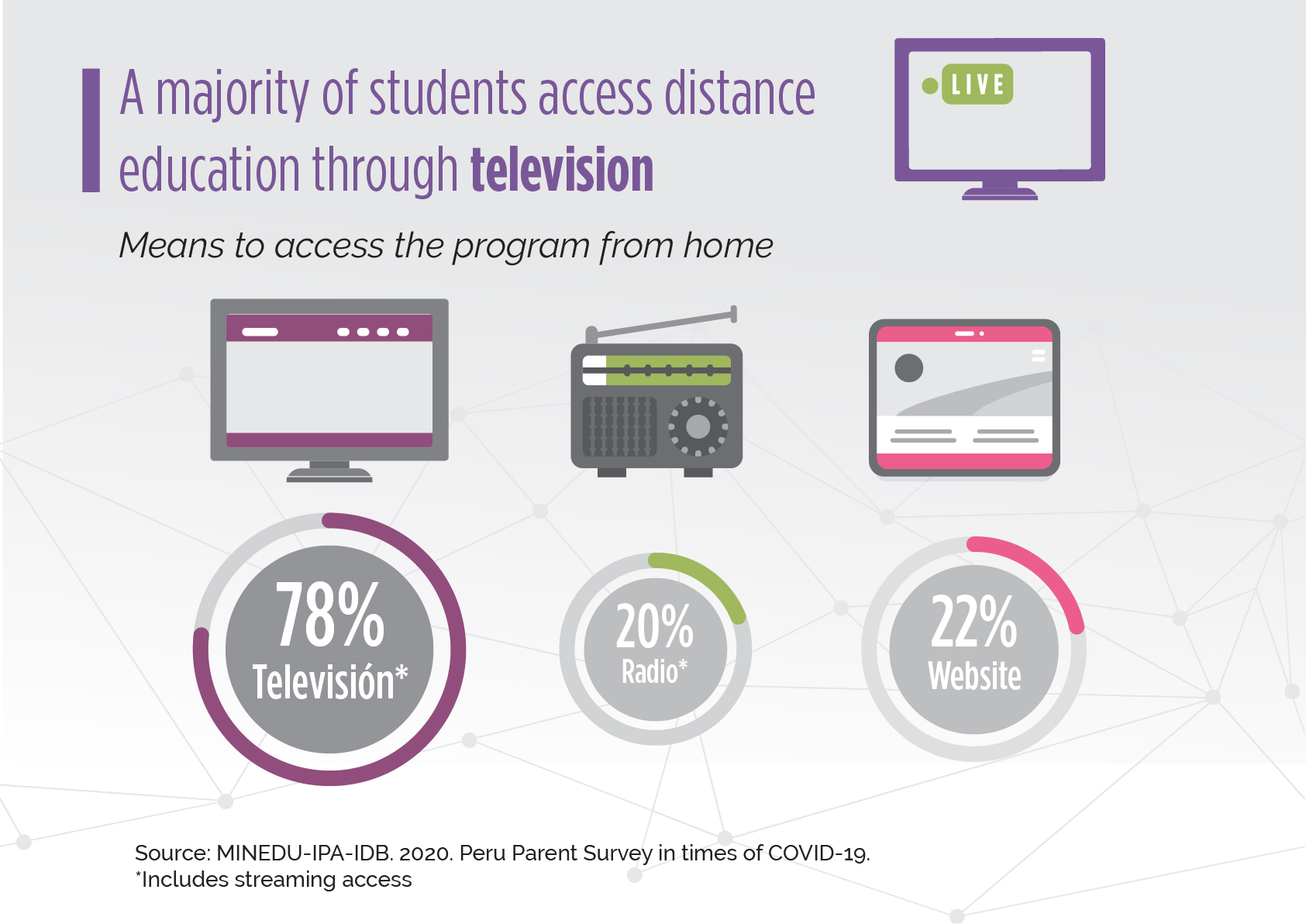
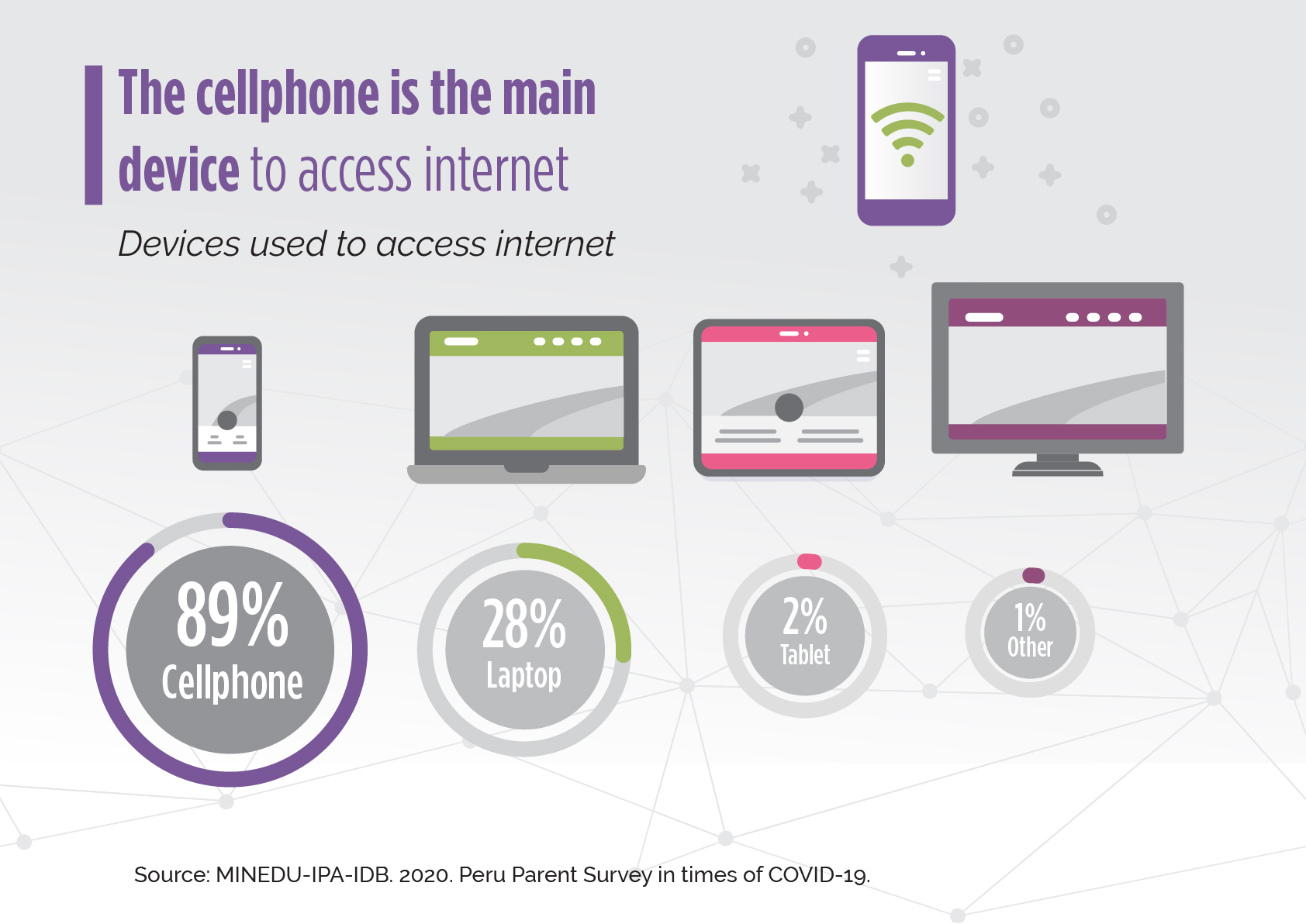
What are the implications of the limited internet access? Limited internet access (39%) suggests the importance of designing content and methodologies for a cell phone screen, avoiding files for download.
Are parents satisfied with distance education? Parents report that students like the program (83%), and that distance education should continue next school year as a supplement to face-to-face education. The most common reasons for dissatisfaction are the short duration of the classes, the lack of interaction with the teacher and the lack of information.
What other educational tools do parents use during COVID-19? Caregivers are taking an active role in education using additional educational resources (78%), including stories, schoolbooks, and drawings. This represents an opportunity to document and disseminate open access resources as a complement to AeC.
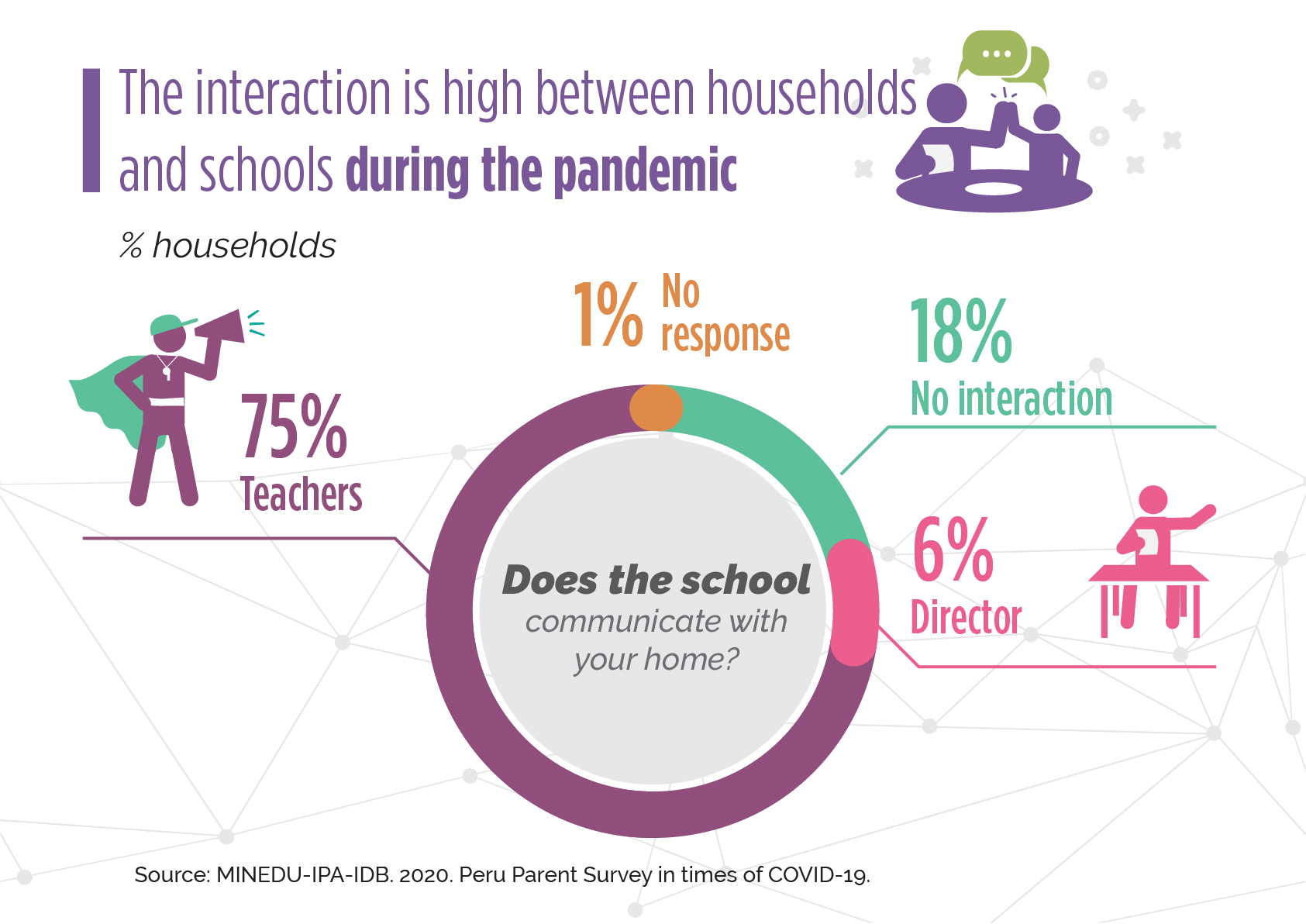 Are families in contact with their schools? The interaction between families and other actors in the educational community is high, 79% of families have maintained communication with the teacher, promoter, coordinator or school principal. However, this conclusion is limited by accessibility to cell phones, internet and good cellphone coverage. The most used means of communication are cell phones and WhatsApp. Topics covered include information about AeC, and teacher support in and learning.
Are families in contact with their schools? The interaction between families and other actors in the educational community is high, 79% of families have maintained communication with the teacher, promoter, coordinator or school principal. However, this conclusion is limited by accessibility to cell phones, internet and good cellphone coverage. The most used means of communication are cell phones and WhatsApp. Topics covered include information about AeC, and teacher support in and learning.
How do families suggest improving distance education during the 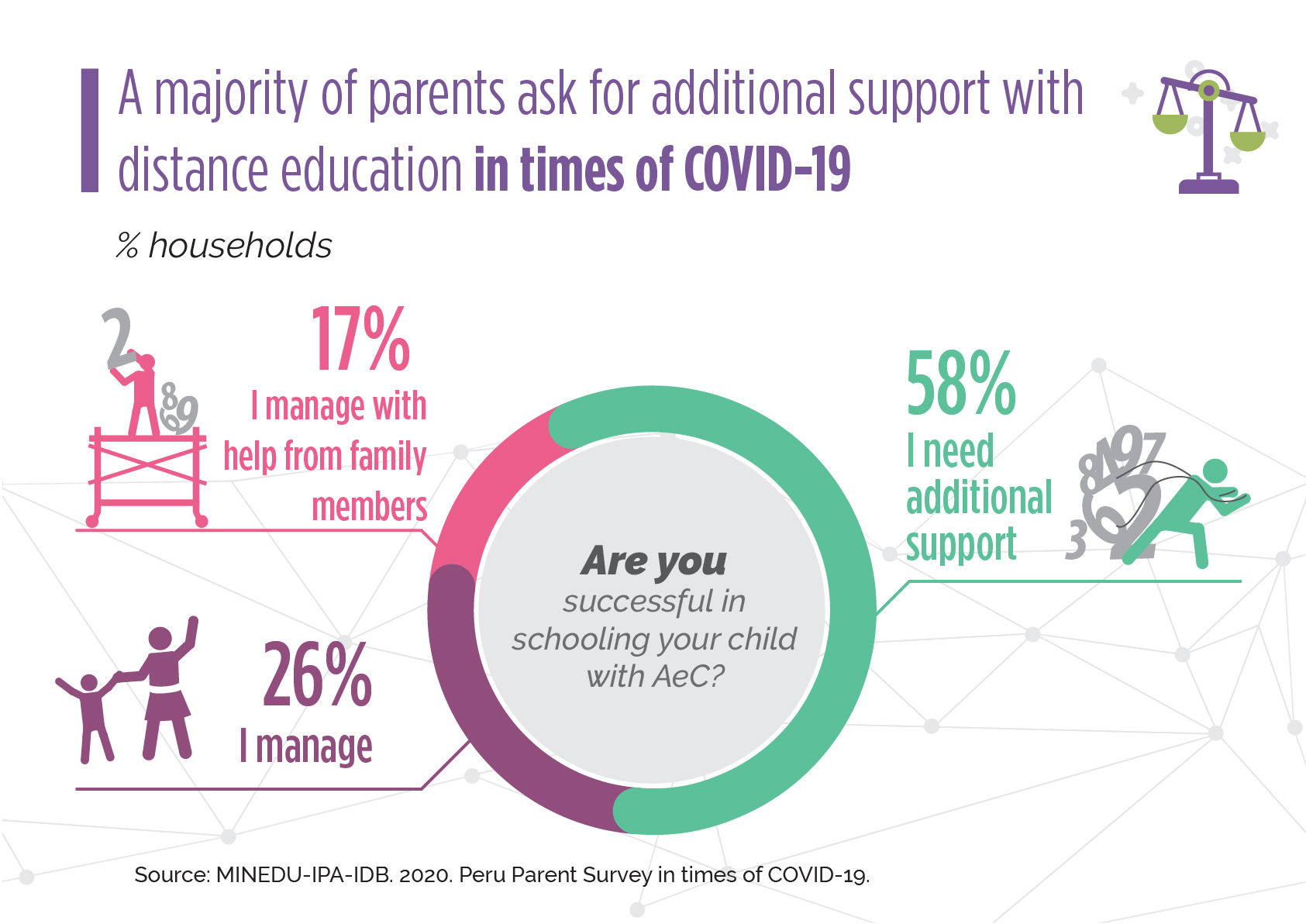 pandemic? Nearly two-thirds of caregivers ask for more support to improve learning at home, including guidance, resources, and materials.
pandemic? Nearly two-thirds of caregivers ask for more support to improve learning at home, including guidance, resources, and materials.
The data presented here is part of a monitoring and AeC evaluation strategy to learn about what works in distance education. In two subsequent blogs we will share more on families’ perspective on education in the days of COVID-19. The digital divide has been one of the biggest barriers in dealing with the pandemic, as many LAC students do not have Internet at home and are disadvantaged in accessing remote learning. The results from Peru teach us that one size does not fit all. A multifaceted distance education program like AeC offers opportunities for more students to continue their learning.
What do parents in other Latin American countries think about distance education? Share your opinions in the comments section or on our Twitter @BIDEducacion #EnfoqueEducacion.

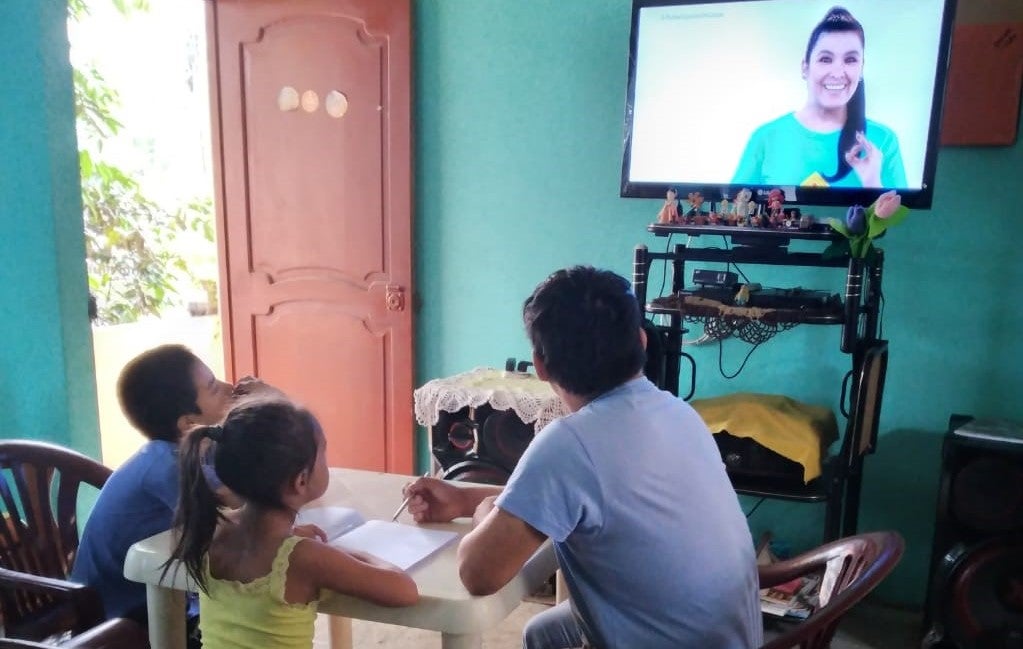
Leave a Reply